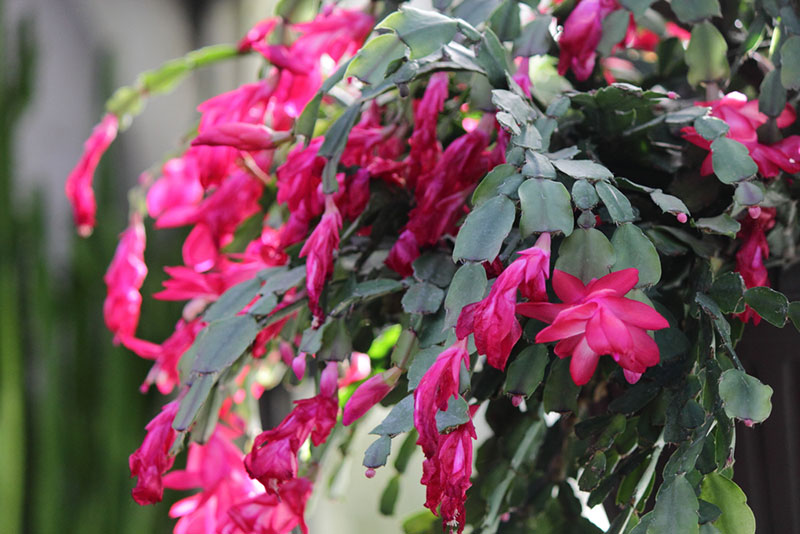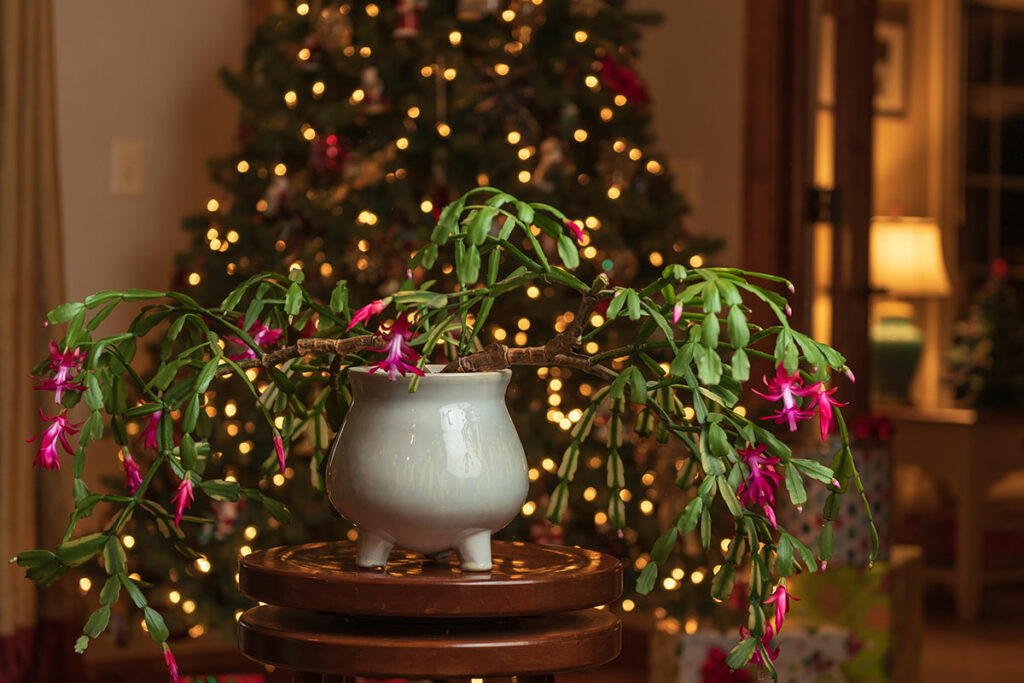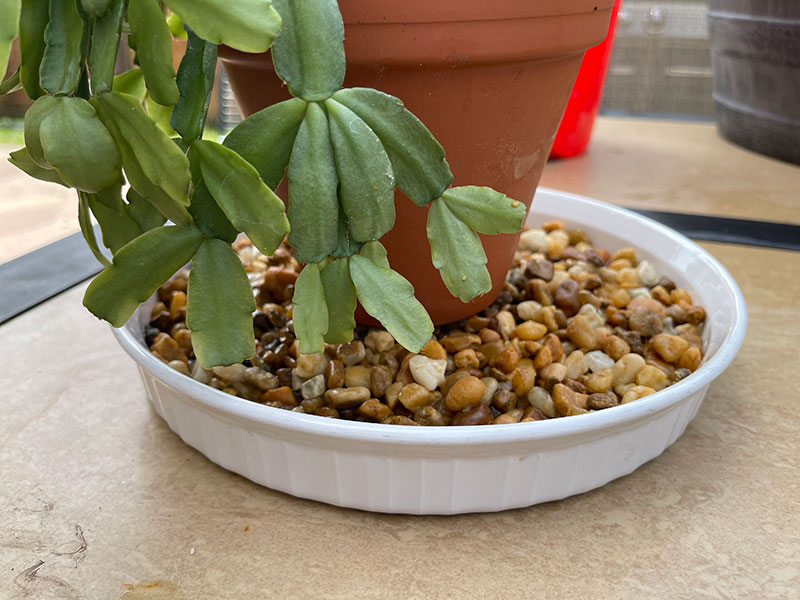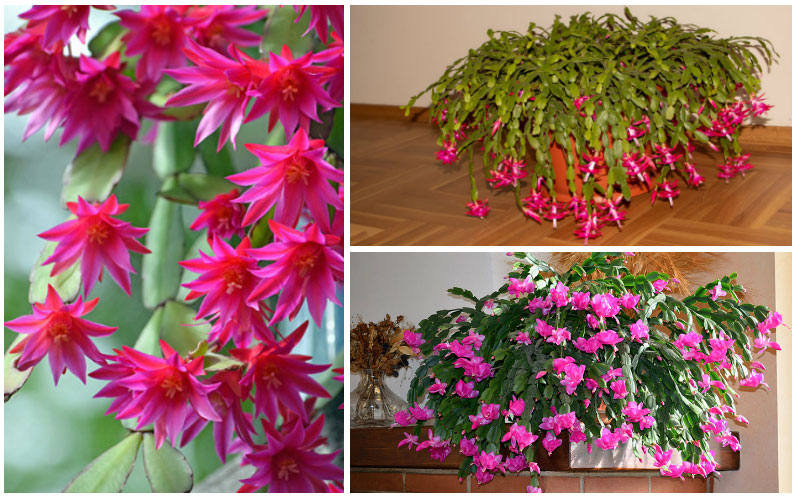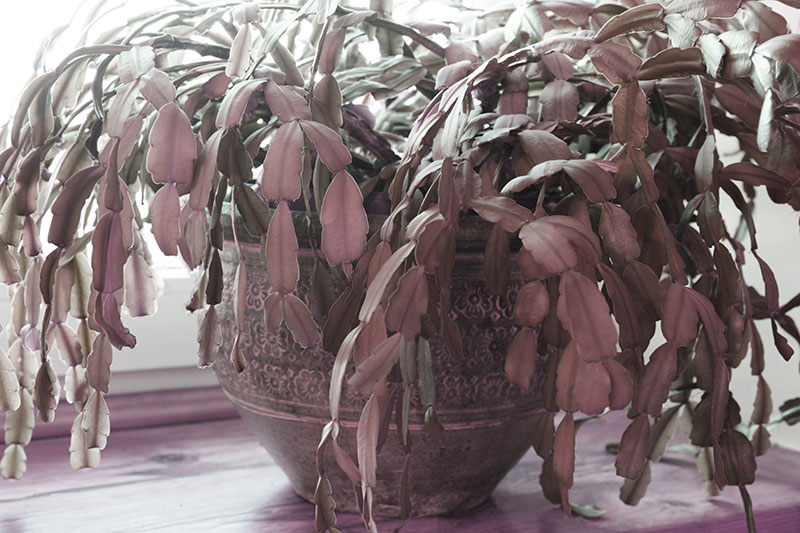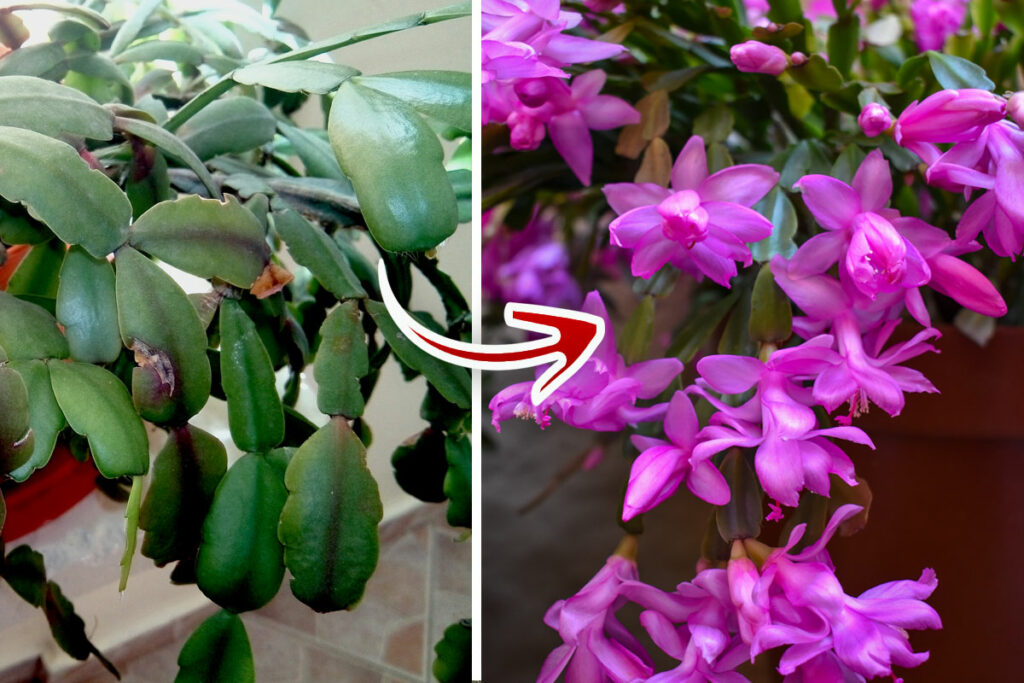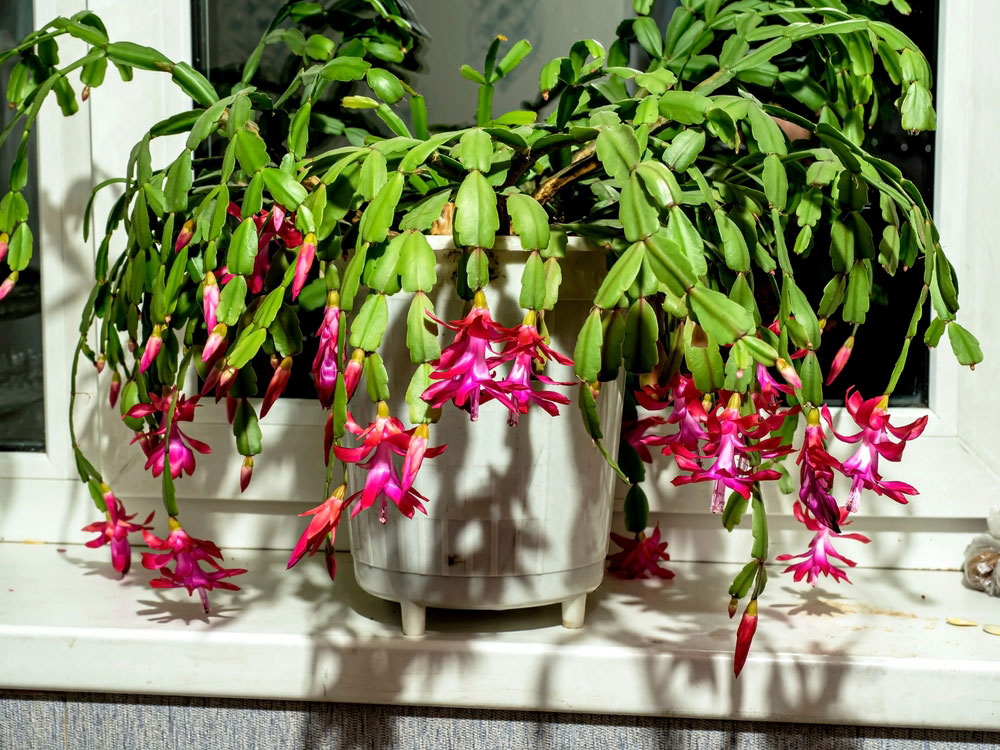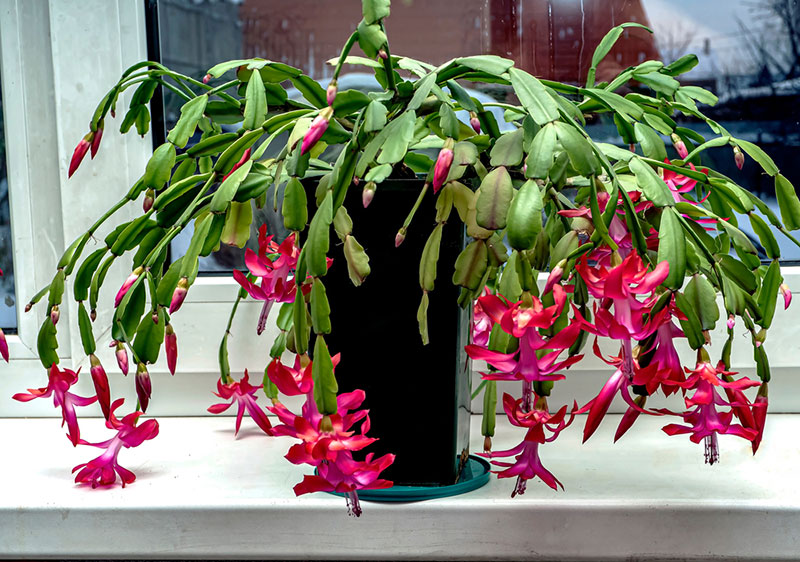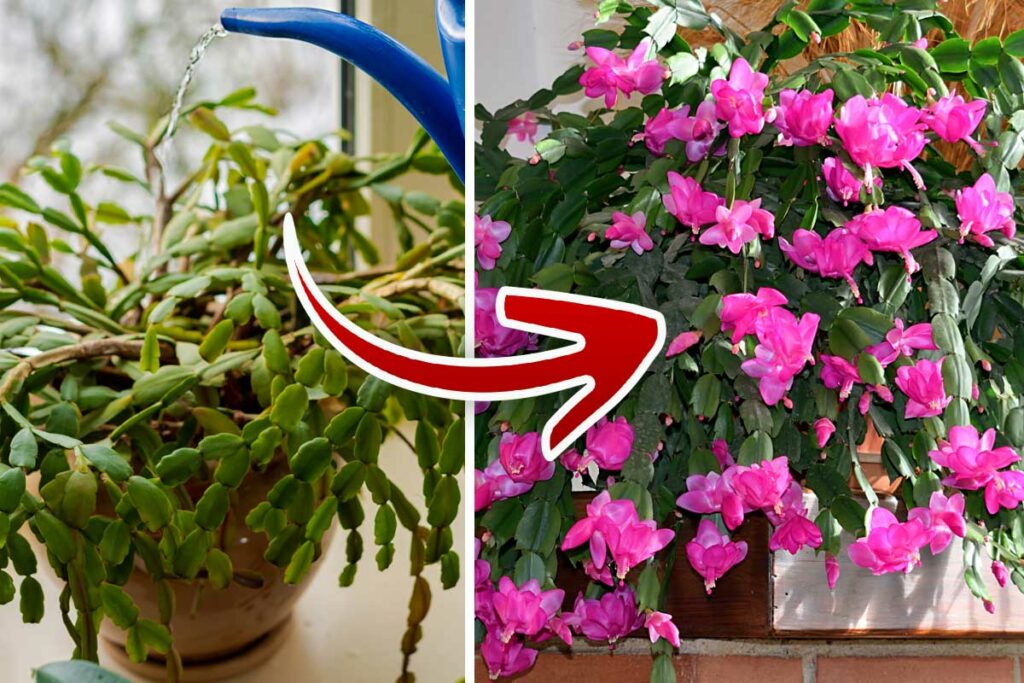Thanks to its long bloom season during a time when floral displays are scarce, Christmas Cactus (Schlumbergera truncate) has long been considered a holiday favorite by houseplant enthusiasts.
Although these plants are relatively easy to grow, those who are new to their cultivation sometimes run into problems.
One of the more common issues with Christmas Cactus is that its foliage sometimes turns purple for what seems to be no reason, and this sometimes causes people to give up on the plant and toss it in the trash.
However, even though the purple coloration is a sign that the plant may be struggling to survive, Christmas Cactus can usually be revived if the conditions causing the purple foliage are addressed.
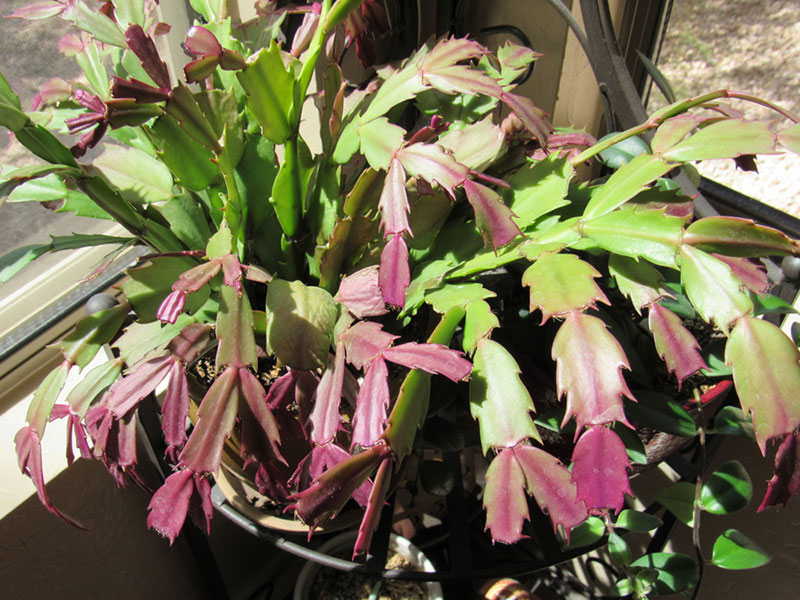
Here’s what you need to know about the most common causes of leaf discoloration on Christmas Cactus and how you can bring back the bright green leaves this plant is known for.
1. Too Much Bright Light
Because Christmas Cactus evolved as an understory plant in a tropical rainforest environment, they’re genetically wired to perform their best in light conditions that mimic the dappled shade of their natural habitat — and this means that their foliage may become discolored if they are exposed to light that is too bright for them on a regular basis, especially during the summer months.
If your Christmas Cactus is placed near a south or west window, try moving it to another part of the house or back from the window several feet.
2. Fluctuations in Temperature
Temperature fluctuations can also cause the foliage on Christmas Cactus to take on a purple tinge or even turn purple altogether.
Christmas Cactus does best when temperatures range between 70 and 80 degrees Fahrenheit during the day and between 60 and 65 degrees at night.
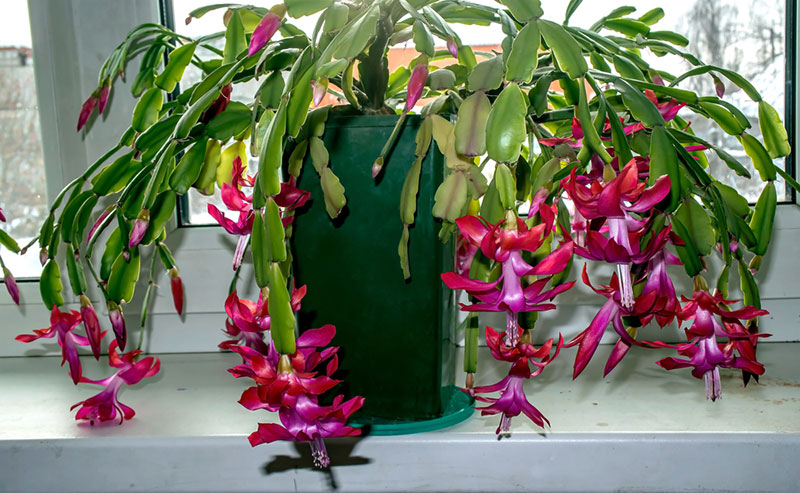
3. Nutritional Deficiencies
Although experts agree that fertilizing Christmas Cactus isn’t advisable during bloom season and the weeks leading up to it, failure to provide proper nutrition during the rest of the year can result in issues such as discoloration of foliage.
Using a general all-purpose fertilizer twice a month from April until October can help prevent the foliage on your Christmas Cactus from turning purple.
Because Christmas Cactus has a higher-than-average magnesium requirement, add a teaspoon of Epsom salts on alternate weeks. Stop fertilizing altogether in October to help promote blooming over the holiday season.
See Tips on Feeding your Christmas Cactus
4. Too Much or Too Little Water
Too much or too little water can also affect the foliage of Christmas Cactus. Watering Christmas Cactus involves a delicate balance — this plant gets waterlogged easily, so only water if the top one-third of the soil is dry to the touch, which should occur every two or three weeks.
Underwatering is a less common culprit when it comes to purple and/or wilted foliage. If soil is dry as a bone, water sparingly over the course of several days until soil is evenly but lightly moist.
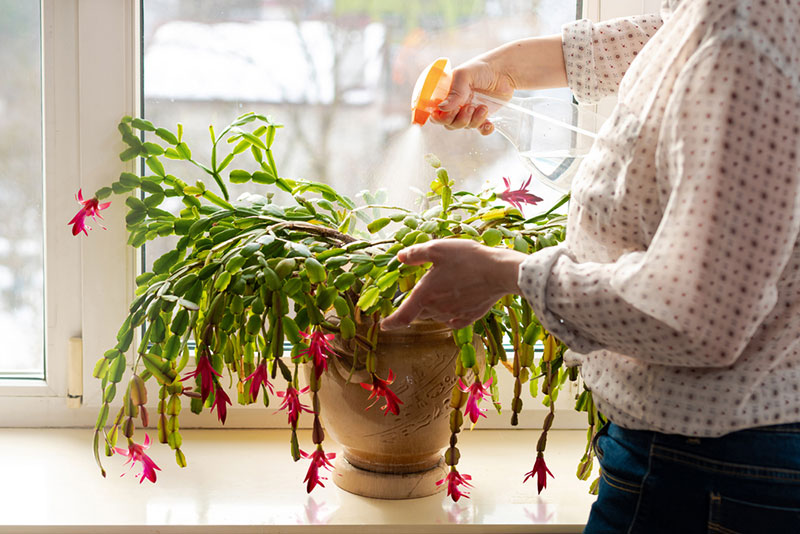
5. Overcrowded Roots
Even though Christmas Cactus prefers a somewhat tight fit in pots, they can become root-bound if the fit is too tight. When the roots become root-bound, they can’t absorb nutrients properly, which means that the foliage doesn’t get the nourishment it needs in order to maintain its characteristic glossy green sheen.
If you’ve ruled out the issues above and your Christmas Cactus still shows purple foliage, it may be time to re-pot it in a slightly bigger pot if it’s been at least two years since you’ve re-potted it.
This is also a good time to swap out the soil with a good quality potting soil mixed with a small amount of vermiculite or sand for optimal drainage.






